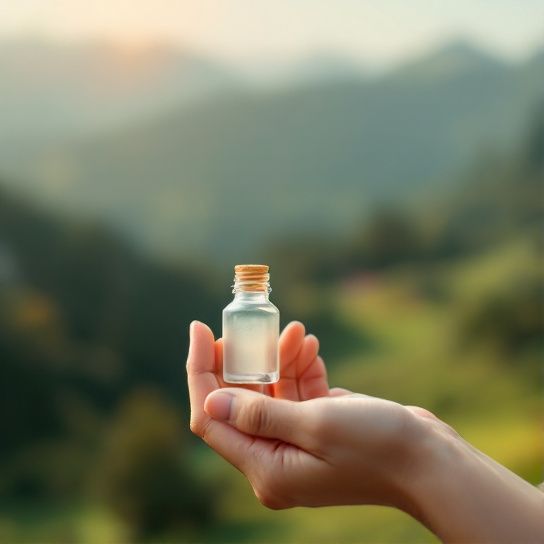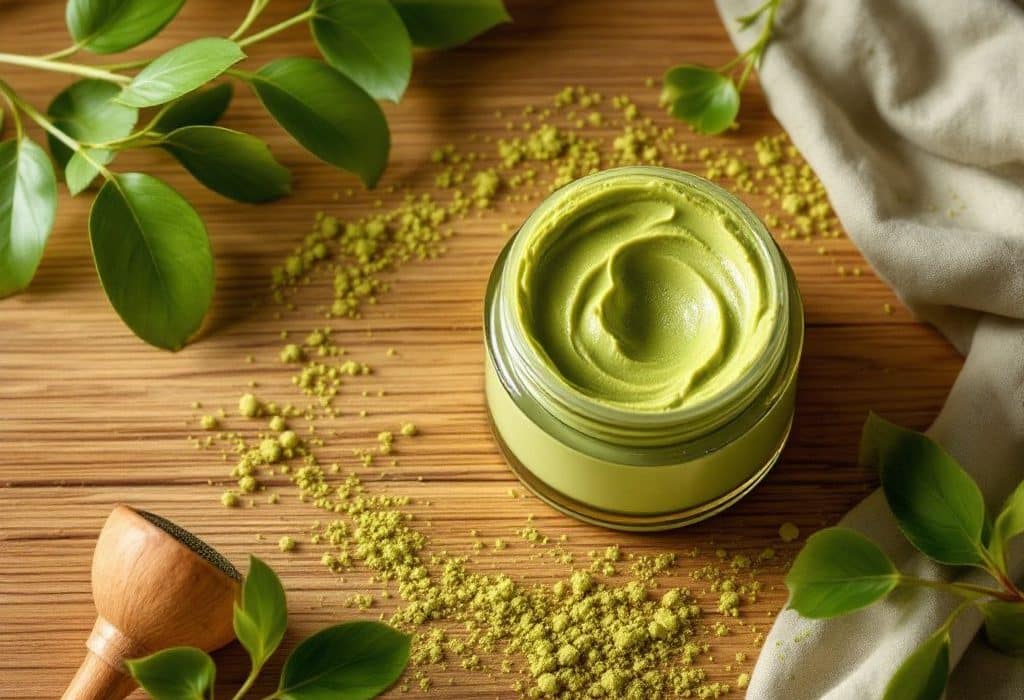Ever felt lost in the vast world of natural skincare products? You’re not alone. If you’ve been searching for something unique yet beneficial that ticks both ‘natural’ and ‘effective’ boxes, let me introduce you to your new obsession—matcha butter. Intrigued? You should be.
The Marriage of Tea and Butter in Skincare
Before we dive into the delightful particulars about matcha butter, let’s chat about why natural skincare is such a game-changer. In an age where we’re constantly bombarded with chemical-laden products, going natural feels like a breath of fresh air, right? Plus, natural products tend to match our pH levels better, and our skin just loves them. It’s like treating your skin to a nutritious, organic meal instead of a fast-food frenzy.
Why Matcha Butter?
Okay, let’s get real for a moment. In the skincare world, certain ingredients come along that make you question everything you’ve been using up until that point. I mean, remember when everyone freaked out over argan oil? Matcha butter is that trendy new ingredient—but it’s more than just hype. It’s deeply nourishing, it’s freakin’ antioxidant-rich, and it has this uncanny ability to soothe irritated skin.
Imagine your favorite tea mixed luxuriously into a creamy butter that makes your skin practically beam with vitality. It’s the best of both worlds. Matcha butter combines the pure power of matcha tea leaves—known for their mind-boggling number of antioxidants—and the inherent moisture retention properties of butter.
Rolling Credits: What Makes Matcha Special?

Alright, let’s pause and chat about matcha, just so you know exactly what kind of skincare superhero we are dealing with here. Matcha is a type of green tea that hails from Japan but packs a bigger punch than your run-of-the-mill green tea. It’s got this super cool ceremonial history, and the whole idea is that you’re consuming the whole leaf—and all its good stuff—when you drink it or use it in skincare.
Antioxidants are matcha’s secret weapons. They help your skin with these tiny invisible fights against pollutants and environmental toxins, like those sneaky little free radicals trying to party on your face. Instead, antioxidants say nope and keep things smooth and youthful-looking. You can think of it like nature’s filter, no Instagram needed.
Crafting Your Matcha Butter Skincare Routine
Getting Started: The Basics
Now, how do you integrate this into your life? It’s not as hard as you might think. First, let’s narrow down what matcha butter could replace in your regimen. Common items are your everyday moisturizer or that all-purpose balm that sits in your purse.
**Step 1: Clean Your Canvas** Start with a clean face, as matcha butter is best absorbed when your skin is optimally primed. Oh, and don’t rush; make face-washing your tiny spa moment for the day.
**Step 2: Freshly Brewed—Apply Matcha Butter** Pat dry, and scoop a small amount of matcha butter. The key is to warm it slightly between your fingers and pat it onto your face, pressing it into your skin lightly rather than rubbing. It may feel weird to pat instead of slathering, but your skin cells will thank you later.
**Step 3: Overnight Repair** Here’s an unexpected tip: try using matcha butter as an overnight repair cream. After all, your body repairs itself at night, so why not give it a little helping hand? Apply a touch more at night, featuring those tired spots that get all the environmental exposure during the day.
Multifunctional Uses of Matcha Butter

And get this—matcha butter isn’t just for your face! You could keep a little tin beside you as a cuticle softener or even to tend to stray frizzes or split ends. Yep, it’s like a Swiss army knife of skincare but made from tea and butter.
Practical Uses:
- Cuticle Care: Master those neglected areas by rubbing a dollop as a quick cuticle healer.
- Hair’s Secret Weapon: Gone mad scientist with a curling iron lately? Use matcha butter sparingly on the ends for a quick de-frizz routine.
- Lips to Love: Say goodbye to chapped lips with a thin layer throughout the day.
The DIY Enthusiast: Make Your Own Matcha Butter
Are you the crafty type who likes to know exactly what goes into their skincare products? Making matcha butter at home can be both gratifying and surprisingly easy.
Gathering Supplies:
- 100g of Shea Butter: This serves as your base and provides deep moisturization.
- 2-3 teaspoons Matcha Green Tea Powder: Aim for a good quality powder—you won’t need much.
- 1 tablespoon of Carrier Oil: Consider jojoba or almond oil for additional boost.
- Glass Mixing Bowl and Wooden Spoon: Because metal might interfere with the matcha’s naturally delicate chemistry.
DIY Step-By-Step:
- Melt the Base: Start with super gentle heat. Place the shea butter in a glass bowl over a pot of simmering water. Give it some room to gently become liquid.
- Mix Master: Remove from heat and gently fold in the matcha powder using your wooden spoon.
- Add The Boost: Slowly blend in your chosen carrier oil until the whole shebang comes together into this beautiful, luscious cream.
- Cool Down: Pop the mix into a jar before it sets. Be patient, let it cool overnight.
- 5. **Final Product: Voila! You’ve created your eco-luxe matcha butter balm.
Key Takeaways and Tips for Matcha Butter Enthusiasts

- Patience is Paramount: Sometimes it takes skin some time to adjust; give it a few weeks with matcha butter before ruling it out.
- Patch Test Alert: Even the gentlest natural products can disagree with some skin types. Always do a little patch test, just in case.
- Storage Smarts: Store matcha butter in cool, dry places. Sun exposure can ruin your masterpiece.
- Opportunities Abound: Look beyond the face; from hands to heels, matcha butter is your skin’s newfound friend.
Common Missteps to Sidestep
- Over-Application Overkill: Less is more here. A dab will do wonders, especially when your skin is new to such concentrated products.
- Ignoring Ingredients: Quality of matcha matters. Lower-tier products can have fillers, affecting both efficacy and fragrance.
- Refusing to Rotate: Every now and then, give your current products a hiatus to see how matcha butter specifically improves your skin.
Establishing a natural skincare routine with matcha butter might be the refresh your regimen craves. Remember, the world of self-care and skincare can be overwhelming, but it’s all about listening to your skin—and obviously, a little indulgence here and there. Give this delightful addition a try, and let your skin’s natural glow do all the talking. Trust me, it’s worth it.
Frequently Asked Questions
What are the benefits of using natural skincare products?
Natural skincare products offer several benefits, including being gentler on the skin, reducing the risk of irritation and side effects, and providing nourishment through nutrient-rich and antioxidant-filled ingredients. They are also eco-friendly, free from harsh chemicals and artificial colors, and can help prevent premature aging of the skin[1][3][5>.
How do natural skincare products differ from conventional skincare products?
Natural skincare products are primarily composed of ingredients derived from plants, animals, or minerals, with minimal or no chemical or synthetic substances. In contrast, conventional skincare products often contain harsh chemicals, preservatives, and artificial colors that can strip the skin of its natural oils and cause irritation[1][3][5>.
What natural ingredients are commonly used in natural skincare products?
Common natural ingredients used in natural skincare products include coconut oil, shea butter, aloe vera, green tea, chamomile, argan oil, and honey. These ingredients are rich in vitamins, antioxidants, and essential nutrients that promote skin health and reduce signs of aging[1][3][5>.
Are natural skincare products suitable for all skin types, including sensitive skin?
Yes, natural skincare products are often suitable for all skin types, including sensitive skin. They are generally gentler and less likely to cause irritation compared to products containing harsh chemicals. Ingredients like aloe vera, chamomile, and shea butter are particularly beneficial for soothing and calming sensitive skin[1][3][5>.
References- Learn Canyon. (2023). The Benefits Of Using Natural Products.
- RFS Adermatology. (2023). The Pros And Cons Of Using Natural Skin Care Products.
- Beau Domaine. (2023). Why Use Natural Skin Care?.


